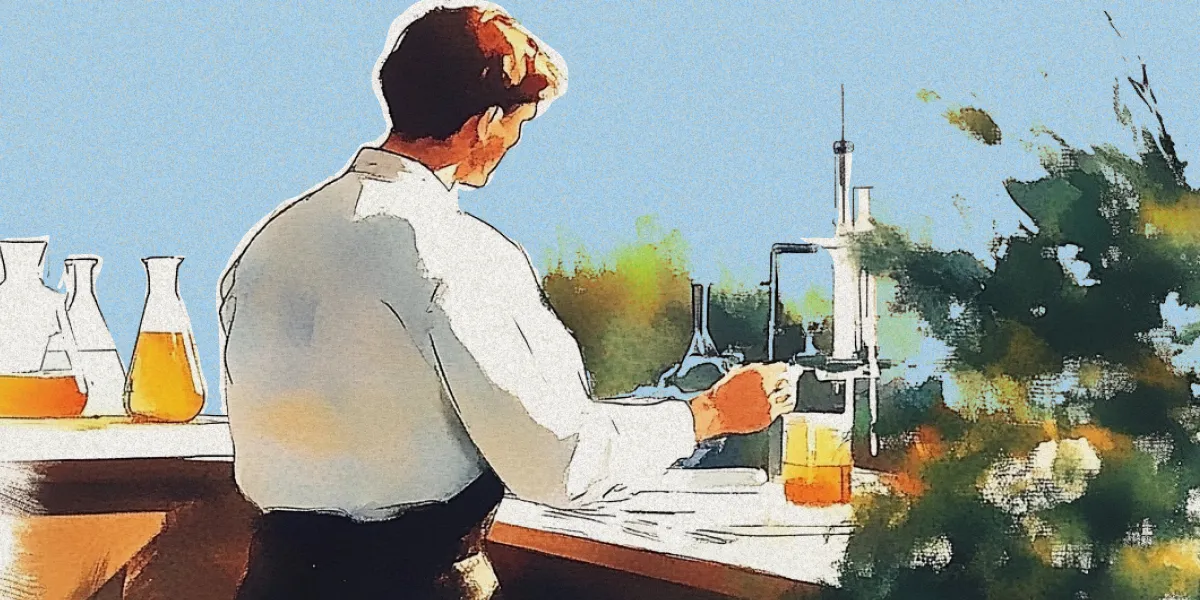Innovation Only Looks like Innovation in Hindsight
Note: This post was originally written and published on Medium and featured by UX Collective. You can read the original post and all the comments there.

Certain things in this world burst on to the scene with a big bang that explosively marks an historical moment of extreme innovation.
Take the iPhone for example --- when that launched it was different than anything we’d ever seen before or expected. When Steve jobs stood on that stage and held up the iPhone 1, we all realized phones would never be there same.
But disruptive cases like this are the minority.
Most real world examples of transformational innovation don’t seem like innovation at first. They are often only seen as innovative in hindsight.
Innovation can be radical as well as incremental. We just need to be cognizant to the subtle changes leading us towards radical innovation.”
~ Manish Jha, Founder of SOEG

Little Tweaks Are Sometimes the Biggest Innovations
Like when a little autistic girl thought just a little differently and dramatically changed the way that every farm and slaughterhouse treats their livestock.
Temple Grandin was 15 when she was sent to her aunt’s ranch in Arizona, and she was terrified; terrified to leave home, terrified of the new place, and terrified of the travel to get there. At the ranch, she saw a similar terror in the eyes of the cattle as they were herded in for vaccinations, care, slaughter, or other treatments.

She watched cattle in the chute ram into one another, slip on the wet ground, and try to spin around --- sometimes injuring themselves. She knew that there had to be a better way, a more peaceful method that left cattle less anxious, a more humane method to herd livestock.
So she got into the chute.
As the cows rushed forward through the chute, she followed. She saw what they saw. She noticed chains hanging from the ceiling that were clinking and clanking back and forth against the metal walls of the chute. She noticed water puddles in the middle of the track that cows were very intentionally trying to avoid. She looked ahead and saw the black emptiness of the barn and the escalating chaos of the cows up ahead of her near the entrance to the barn.
Getting out of the chute, she determined to improve this system.
Her innovations were simple: she cleaned up the chute by removing loose chains, water puddles and other stressors, and she redesigned the chute into a curved shape, so that cattle could no longer see the end of the line (and cattle actually tend to instinctively walk in big curves, so it felt more natural).

These innovations, and more I have not mentioned, were put into use at most livestock farms, and are still in use today.
Stop trying to focus on the large scale, mind-blowing innovations. Begin investing your time in small measurable improvements to gain momentum in your program.
~ Rich Kneece, CEO and founder of Vocoli
Temple of course understood that frantic cattle are bad for business and that cows raised without stress yield better meat. But most of all --- she was motivated to make the cattle’s existence and exit from this world as peaceful a process as possible.
Through her unique, incremental approach to alleviating cattle’s anxiety, she completely transformed the livestock industry.
Real Innovation is Often Only Seen as Innovation in Hindsight
This is real innovation. Mopping up the puddles in a cattle chute doesn’t seem like innovation when it’s conceptualized on the barnyard whiteboard. And it sure doesn’t seem like innovation when it’s implemented. But when you look back and see that it is one of the most transformational changes ever for the livestock industry, it’s very obvious that it is major innovation.
There’s a myth at work here: the assumption that big results only come from radical changes. There’s good evidence for a counter-argument. The problems that plague organizations, or hold them back from greatness, are often small things that happen to be consistently overlooked. The lack of progress or greatness isn’t because there’s a grand idea missing. Instead the cause is a simple idea prevented by bureaucracy, killed out of ignorance, or buried under incompetence. If those simpler, smaller, ideas were set free, the effect would be as potent as any grand theory. Somehow we discount simple ideas for being playthings, for being too small to be worthy, not recognizing the surprising power hidden in what seem to be our smallest decisions.
The point is that real innovation doesn’t have to be flashy, it doesn’t have to use bleeding edge technologies, it doesn’t have to be a new product or business unit, it doesn’t even have to be new - something nobody has done before.
Real innovation happens when you focus on solving real friction in real people’s lives using the tools and technologies that you have right at your disposal.
Sources, Contributions, and Image Credits
- Wired - http://www.wired.com/insights/2014/09/innovation-small-ideas-big-wins/
- Manis Jha - http://manishjha.net/2015/07/08/innovation-and-creativity-quotes/
- Scott Berkun - http://scottberkun.com/2015/why-small-ideas-can-matter-more-than-big-ideas/
- Biography.com - http://www.biography.com/people/temple-grandin-38062
- National Geographic - http://theplate.nationalgeographic.com/2015/08/19/temple-grandin-killing-them-softly-at-slaughterhouses-for-30-years/
- Wired - http://www.wired.com/insights/2014/09/innovation-small-ideas-big-wins/
- Grandin.com - http://www.grandin.com/references/solv.lvstk.probs.html
- Temple Grandin Imagery - http://londonachievementprocesses.com/temple-grandin-a-needed-mind/
- Chute Imagery - https://www.emporia.edu
- Many thanks to my coworkers Francisco Inchauste, Matt Kollmorgen and Richard Gunther for their valuable contributions on this topic.

